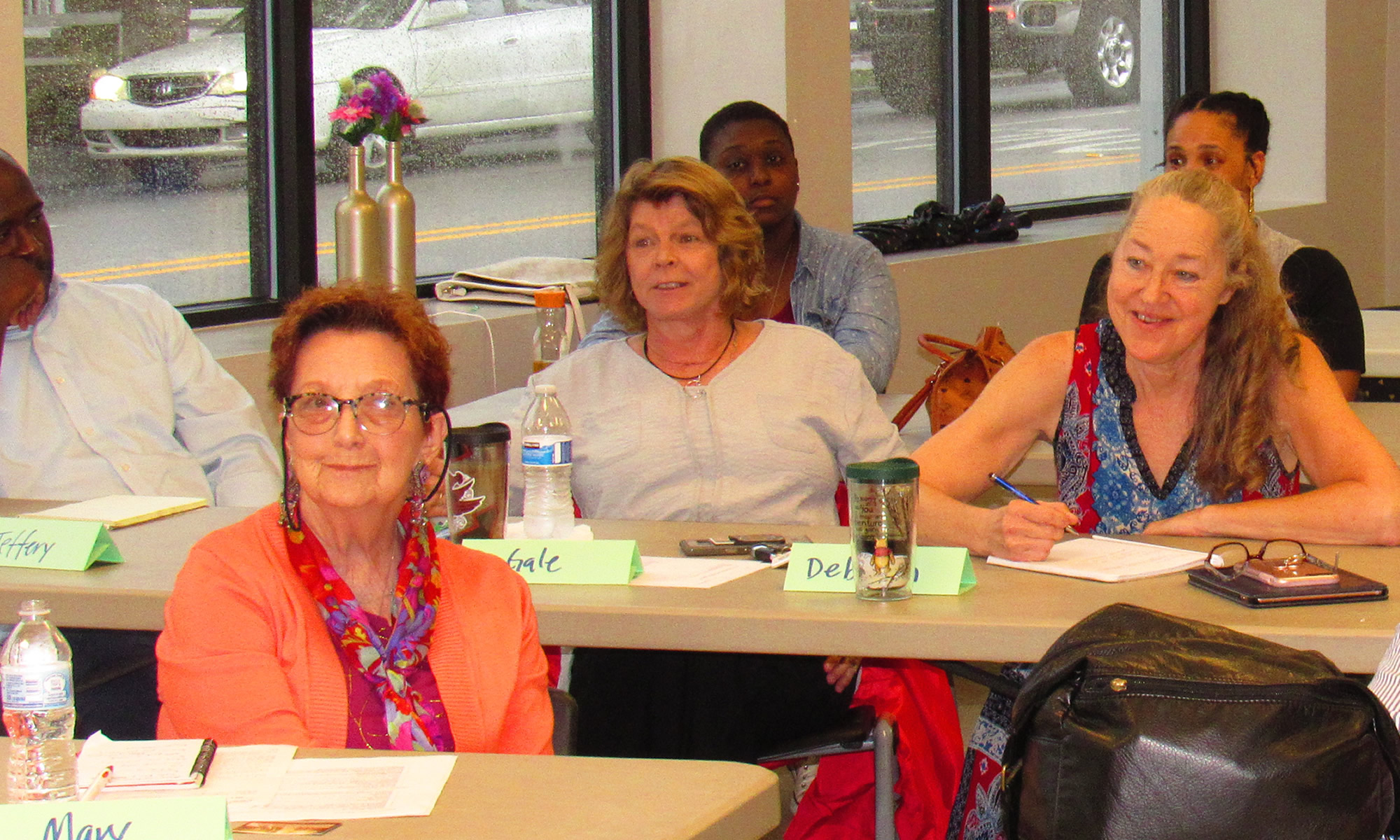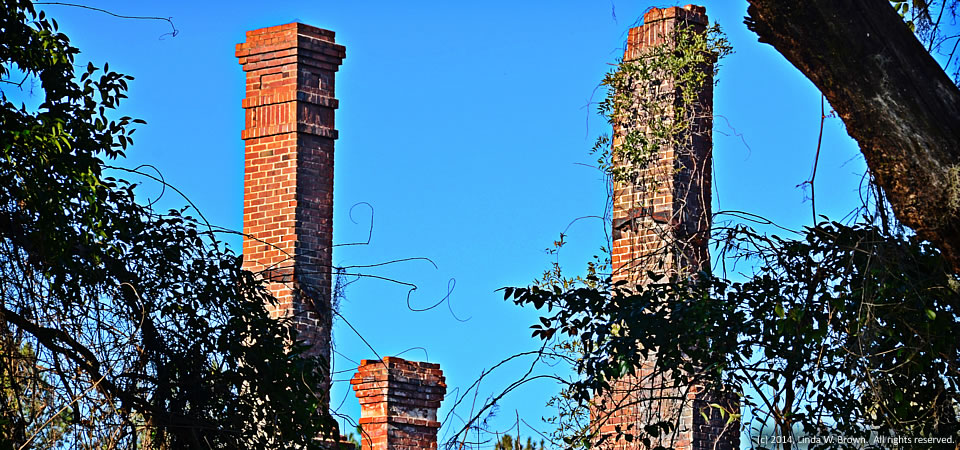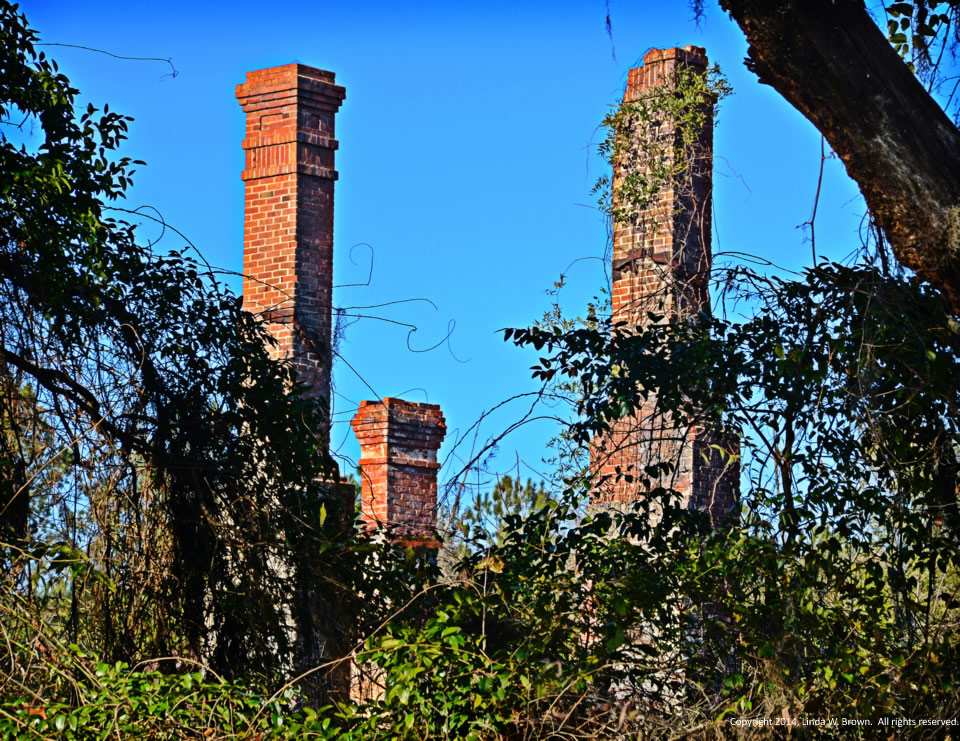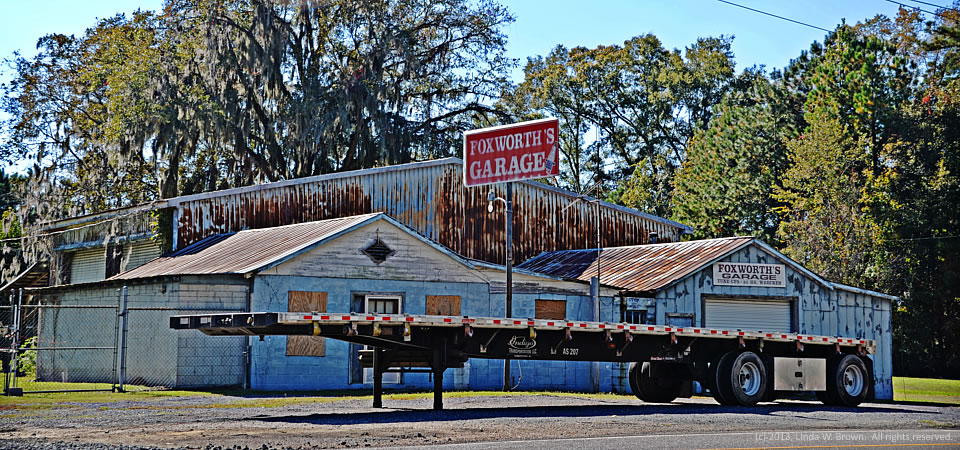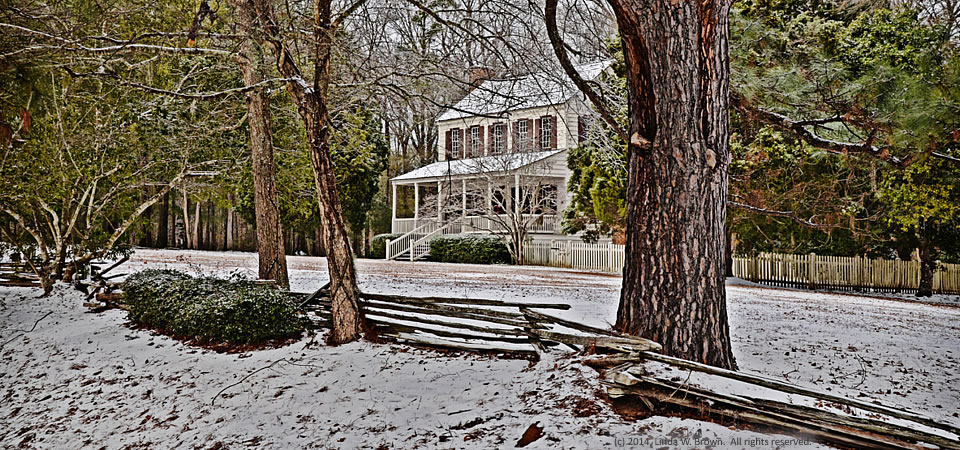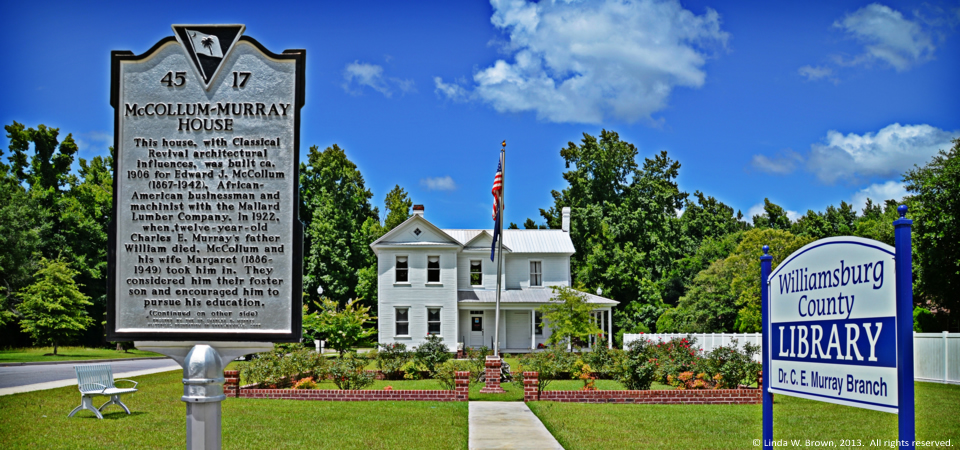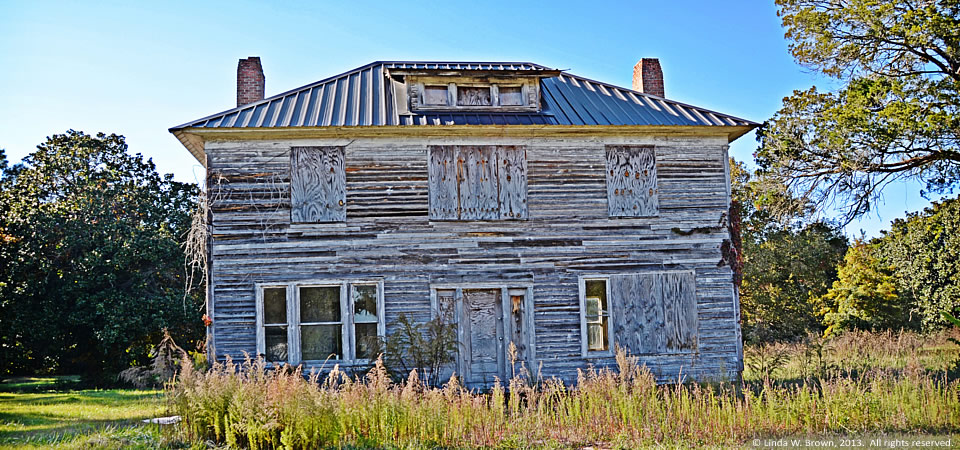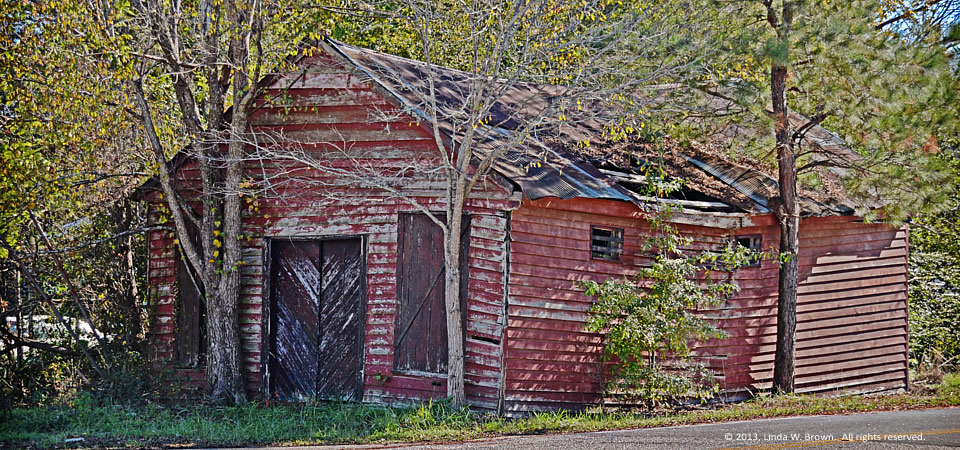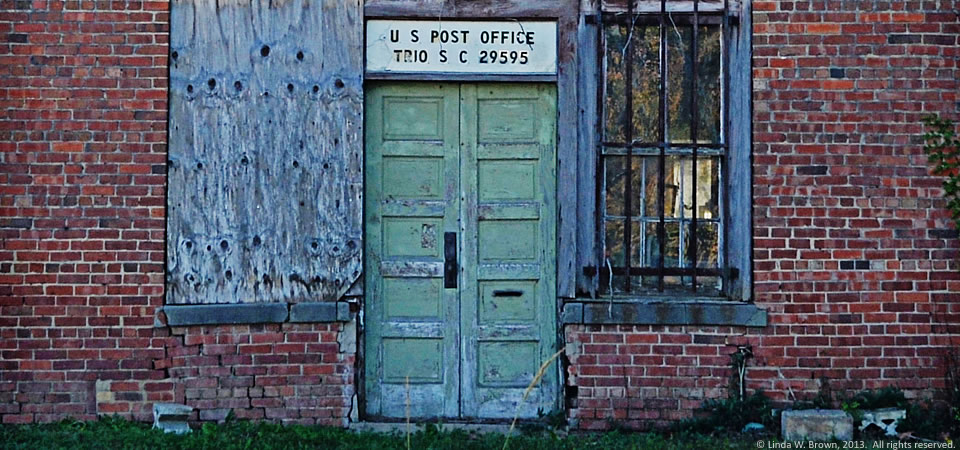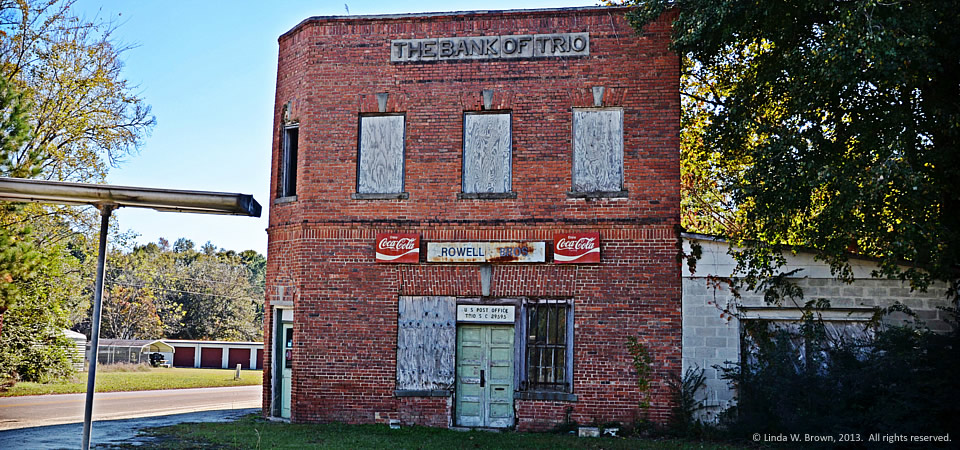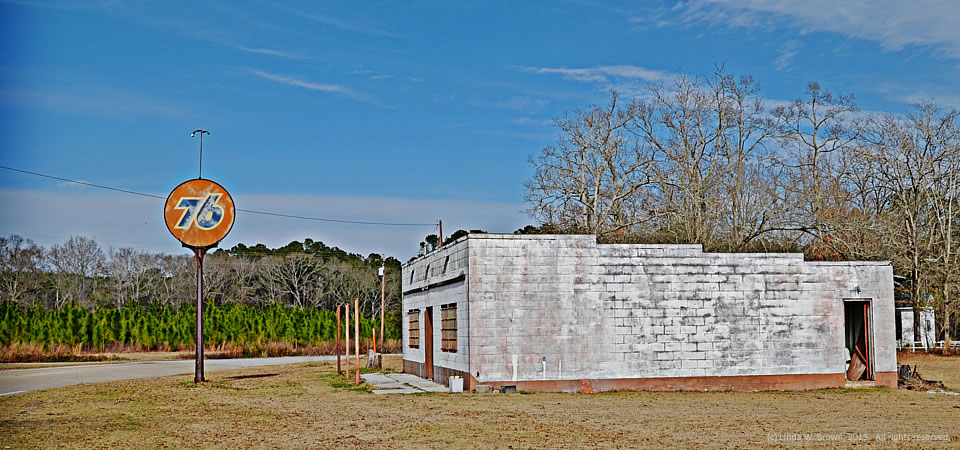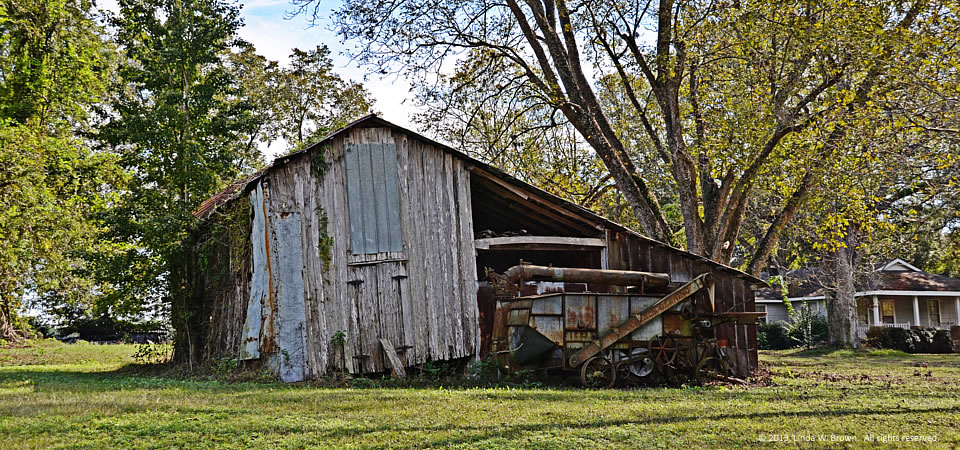“These chimneys are all that remain of a once-stately home in the Old Morrisville section of Williamsburg County, S.C.,” writes retired editor and photographer Linda W. Brown of Kingstree. “All too many of these old home have been allowed to decay and are very often replaced by manufactured housing.”
Williamsburg County, which is about 75 miles north of Charleston, S.C., has a population of just under 34,000 people. Population peaked in 1950 at 43,807, but has dropped slowly since then.
About two-thirds of county residents are black, with almost all of those remaining being white. Only 2 percent of those in the county are of Hispanic descent. Some 32.8 percent of residents live in poverty, according to the Census. Of the county’s 1,921 firms, 36.5 percent are black-owned — a percentage that is three times South Carolina’s average.
Photo taken Jan. 19, 2014, by Linda W. Brown. All rights reserved.
